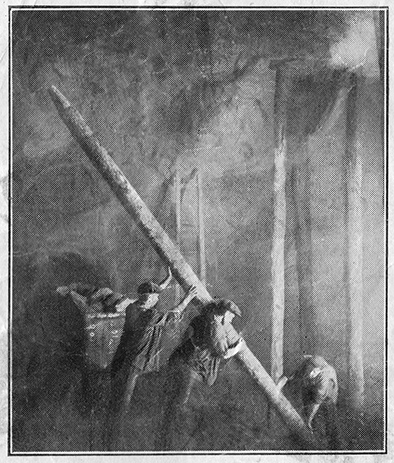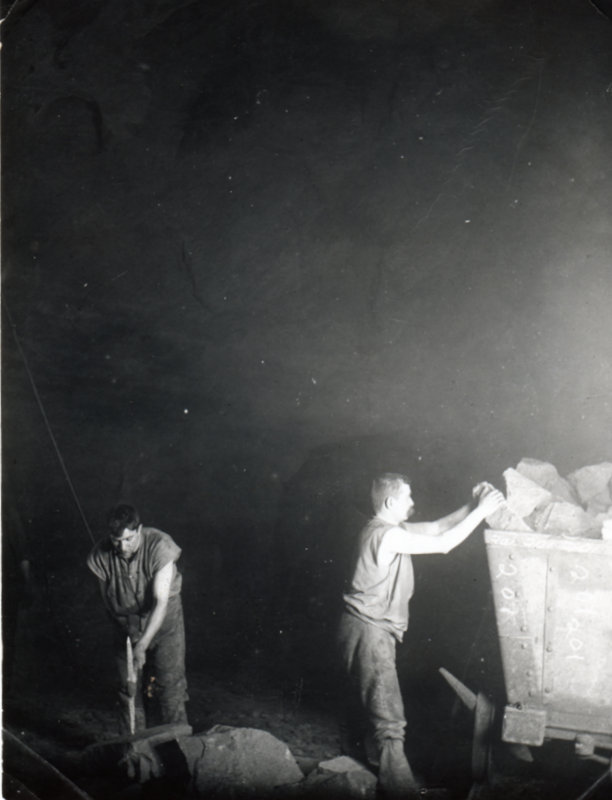

Sitemap |
Accessibility Policy |
Privacy Policy |
Terms & Conditions |
Copyright
Copyright © 2008-2025 Normanby Local History Group - All Rights Reserved
Copyright © 2008-2025 Normanby Local History Group - All Rights Reserved

Copyright © 2008-2025 Normanby Local History Group - All Rights Reserved
www.normanbyhistorygroup.co.uk
Normanby Ironstone Mine
Eston Is Famous For its Ironstone Mines But What About Normanby ?
The Three Major Ironstone Mines centred around Eston have recently been brought to the attention of Teessiders (and a wider audience) by a film called "A Century In Stone".
I would like to bring to the attention of my fellow "Normanby-born" residents that Normanby too played a part in the opening up of the "main seam" of ironstone which runs in a very deep band along the bottom of Eston Hills. We should be proud of the men who worked very hard in an extremely dangerous industry to eke out a living alongside "Shakey's Bank".
Normanby Mine Buildings in Operation.
"Photo" shows where the photograph of the miners (see below) was taken.
It may surprise many readers to learn that the Normanby Mine possessed its very own "SS Castle" before the Eston Mines. (The local name of the Eston Mines "SS Castle" arose from the S-shaped tie-bars of the construction). These Guibal fan-houses (named after their Belgian inventor) attempted to keep the air beneath ground in the mine workings from becoming unbreathable. The best still standing example in the country is the Guibal fan-house at Huntcliffe .
Guibal Fan House at Huntcliffe 2014 - Photo by Eric Barker.
From the Normanby mine over one million pounds worth of ironstone went to keep alive the blast furnaces and steel plants along the banks of the Tees.
The mine was in operation for 40 years up until 1899 when it became exhausted and it finally closed some 50 years before Eston Mines.
Where Was the Normanby Ironstone Mine?
The following images show where the mine was situated on land at the base of the Eston Hills to the east of Flatt's Lane.
As can be seen from the Google Map it was not far from Normanby where many of the miners lived.
The Mine Location shown above on an Old Ordnance Survey Map.
The Mine Location shown above on a Present Day Google Map.
Note the curve of the disused railway line which led to the former Normanby Brickworks
which is now the site of the Flatts Lane Woodland Country Park.
Who Were the Normanby Ironstone Miners?
In 2011 the Normanby LHG website placed an Appeal for the names of the miners in a photograph shown by member Joan Outhwaite at the group's exhibition (see below). Joan knew two of the names - her great grandfather Robert Smith and his brother-in-law William Barker.
I am the great grandson of William Barker and I also have a copy of the original photograph which has a date of 1888 on the back.
[This confirms Joan's possible date as Cargo Fleet Iron Co took over the Normanby mine in 1888.]
My copy of the photograph belonged to my grandfather Isaac Atkinson Barker who lived in West Street and was also a miner at Eston.
Photo from Joan Outhwaite
[Point cursor at the person in photo above for a pop-up showing their name as below!]
Names of known miners left to right -
Front row: 1.'Chick' Handford 2.William Barker 3.unknown 4.'Friday' Bulmer 5.unknown 6.Markham
Back row: 1.Tommy Housam 2.unknown 3.Robert Smith 4.unknown 5.Cuthbert 6.unknown 7.Dick Wallace
The extra names above and the extract below are from the back cover of the booklet ""Cleveland Ironstone Mining" by John S Owen published by Peter Tuffs for the Cleveland Ironstone Mining Museum in 2007. This also illustrated another copy of this photograph.
The miner named as Markham in the above photo is probably James Markham as the only entry for a Markham ironstone miner found in the 1891 census in this area was for a James Markham age 32 an ironstone miner from Peasenholm, Suffolk.
The census record of James & his wife Elizabeth's family included a son David age 9 born in Middlesbrough. Sadly the Normanby War Memorial records this David Markham as one of the men killed in the Great War 1914-1918.
*** Do you know anyone in the above photograph whose name is missing, incomplete or wrong? ***
[Please contact us if you can help fill in the gaps !]
Last Iron Stone Miner of Normanby Isaac Atkinson Barker (1884 - 1978)
(Click on the photos to show a larger image)
Isaac was a trombonist in the Eston Miner's Silver Band and took part in a band contest at Crystal Palace in 1929.
(see Appeals Photo of Brass Band....)
The photograph in the cutting above shows Isaac holding up his photograph of the Normanby Ironstone Miners depicted earlier.


He is also holding one of the three of his photos shown below. Isaac probably removed these from his personal notebook said his grandson Eric Barker.
Isaac was a mine deputy at the Eston ironstone mine until he retired at the age of 62.
Photos below show Eston Mine Deputies carrying out safety work - releasing loose rock in the mine roof & shoring up the very high roof that resulted from the thickness of the Cleveland Main Seam.
(Click on the photos below to show a larger image)
The captions on the enlarged images are as written by Isaac Barker on the back of the originals he owned.
The third image above is of a photo - almost identical to one further below which has been identified by Craig Hornby as being one of a set of photographs taken in the 1920s for the journal "Iron and Coal Trades Review".
The first two images above are of cuttings from a printed source so are probably part of that same set of photographs.
The copyright of these three images was probably originally held by that journal but probably expired in the 1990s.
Information relevant to the above photos has been provided by Craig Hornby on the East Cleveland Image Archive under the heading ’Main Seam’ the text from which is reproduced below by kind permission of the East Cleveland Image Archive.
John Hannah (East Cleveland Image Archive) has sent us good quality images of the 3 photos below and given us permission to display them. Note that the third photo below has some slight differences to Isaac Barker’s 3rd photo above - so they were taken just a few moments apart! (Click on the photos below to show a larger image)



What Later Use Was Made of the Normanby Mine?
Joan Outhwaite has found the following evidence that the Eston Mines (closed in 1949) were used as air-raid shelters during WW1.
The Normanby Mine ceased ironstone production and closed in 1899 - but could still have been made accessible again in WW1.
So was the Normanby Mine similarly used for shelter during air-raids?
[If you have any evidence or family lore that confirms this then please contact us !]
Thanks to Craig Hornby of www.pancrack.tv for his permission to reproduce the images of the Mine Buildings & the Old OS Map.
Further information on the Normanby Mine is available from the Durham Mining Museum website.
© 2014 Eric S Barker Normanby Local History Group